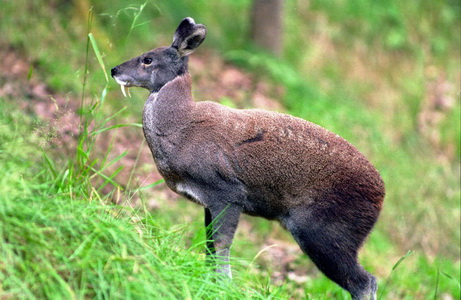
Moschus leucogaster (Himalayan musk deer)

Moschus leucogaster – Himalayan Musk deer
| Common name | Himalayan Musk Deer |
| Latin name | Moschus leucogaster Hodgson |
| Local name | Kastura |
| IUCN/WPA/Indian status | Endangered/locally common |
| Social unit | Solitary, except when female is with young |
| Size / weight | HBL: 86-100 cm, HAS: 50 cm. Weight : 13-18 Kg |
| Description | A shy, brownish yellow, dog sized, mountain ruminant, the Himalayan Musk deer can be differentiated from the alpine musk deer in having dark legs and chest with no chest stripe. The under parts are pale, rump and buttocks are dark, The face is grayish brown and the eye may or may not have an eye ring, which when present is faint and grayish. The ears are brown on the back, but have grey rims insides. |
| Behavior | Communication is chiefly by olfaction. The deer sent marks by defecation and secretion of caudal, musk and inter digital glands |
| Distribution | The Himalayas from central Kashmir through Himachal Pradesh up to Sikkim |
| Habitat | Subalpine oak and rhododendron forests ( 3000-4300 m) medium to high elevation coniferous forest in the Western Himalayas below the tree line ( 2500-4400 m) in Sikkim, thick bamboo forests below alpine zone ( 2600-300 m |


